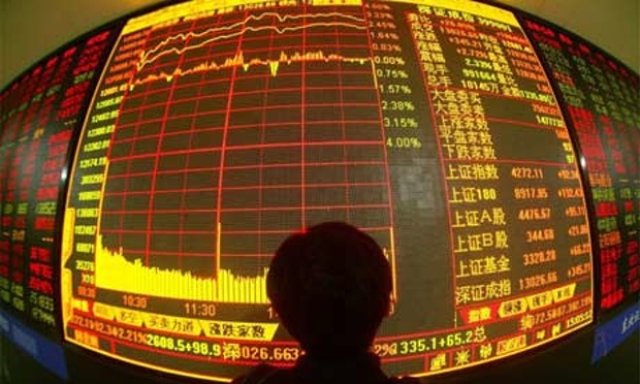
The one thing neoliberal touts want us to forget is that the effects of the Global Financial Crisis of 2008 have never been overcome – and are still felt today.
There is no such thing as everlasting “natural growth” in the world economy. As John Maynard Keynes long ago pointed out, capitalism “seems capable of remaining in a chronic condition of sub-normal activity for a considerable period without any marked tendency towards recovery or complete collapse”.
This has been the state of the international economy for at least the past eight years. The Japanese economy, the third-largest in the world, has been stagnant for the past 20 years.
It was China that rescued the world economy in 2008 with counter-cyclical stimulus spending that came at an initial cost of US$4 trillion. But the Chinese economy is now in difficult transition as it tries to steer a course from export-led growth to an expanding economy based on domestic consumer spending.
At the same time, it has to somehow deflate a property bubble and deal with investment and credit bubbles.
When the G20 group of nations met in Brisbane last November, they agreed on a “plan” to accelerate economic growth by lifting productivity, raising investment and creating jobs.
Joe Hockey and Tony Abbott strutted the international stage, trumpeting what they called a “Brisbane Growth Plan”.
The International Monetary Fund (IMF) and the Organisation for Economic Cooperation and Development (OECD) estimated that the more than 800 measures agreed on would add $2 trillion to the world economy, create millions of jobs and lift global growth in 2018 by 2.1% more than the IMF forecast after its 2013 G20 summit.
But the result to date is negligible. The IMF’s most recent analysis forecasts growth to be 10% less than its 2013 estimates. The IMF now expects the Chinese economy, together with those of the US and Japan, to be considerably weaker in 2018 than it predicted in 2013.
The IMF has also been urging China to lower its annual growth target of 7% and float its exchange rate.
In recent years, various Chinese government officials and economists have suggested the Chinese model of authoritarian state-controlled capitalism is superior to the capitalism of Anglo-Saxon parliamentary democracies. But what both these models now share is the fact that they are equally anaemic.
The importance of the Chinese economy to the rest of the world is obvious. Its exports account for 13% of world trade, which is why global share markets followed the Shanghai Stock Exchange Composite Index downwards when it fell by 8.5% on August 24.
This came despite the efforts of the China Securities Finance Corporation (CSFC), the state-owned company that provides finance to brokerages, doing its best to prop-up the stock market with the $433 billion at its disposal.
The CSFC likes doing things in secret. It avoids the market rule that it must disclose within three days any shareholdings above 5% that it buys by transferring them into trust accounts that no one in the market can access.
According to one report, it locks its traders inside blacked-out rooms to prevent leaks while it carries out trades on the government’s behalf. But after the stock market rout, CSFC has all but given up trying to intervene in the market.
Reliable economic data is hard to come by in China. Few economists believe China’s official growth figures. Earlier this month, major US funds exited the Chinese market, suspecting that the Chinese economy was slowing at a much faster rate than the government acknowledges.
Two independent economic research and forecasting companies in London have tried to measure the growth of the Chinese economy by examining indices such as freight activity, electricity consumption, property development, passenger travel and ocean borne cargo trade.
The two companies, Capital Economics and Lombard Street Research, have arrived at growth rates of 4.8% and 3.7% respectively for the year to date.
It came as the more easily accessed data on China’s joint venture vehicle-manufacturing with foreign companies, which includes General Motors and Volkswagen, showed most are cutting capacity.
This is why the recent release of the Caixin Purchasing Managers Index, which gauges China’s factory activity, revealing a six-and-a-half year low on top of a currency devaluation the week before, sparked the stock market gyrations in China and around the globe.
After the stock market crash, US researchers reported that China’s exports had fallen by 8.3% year-on-year to July. They also claimed that construction start-ups fell 16.8% during the seven months to July compared with the previous year.
The Hong Kong-based watchdog, China Labour Bulletin, says that the number of labour protests and strikes more than doubled in the second quarter of this year compared to last year.
So far, the People’s Bank of China has tried to cut interest rates, by 1.4 percentage points since last November, and devalued the Yuan to stimulate the economy – to little or no effect.
Its next plan is said to be the flooding of the banking system with money to increase lending.
The neoliberal prescription for prosperity came from the previously unknown economic phenomenon that appeared in the 1970s of “stagflation” – rapid inflation alongside stagnation of production and high and rising unemployment.
The global economy is now suffering from a combination of deflation, stagnation, unemployment and underemployment – stagdeflation as it might be called.
Where it will all end is impossible to predict. There was one bloke, who went by the name of Karl Marx, who had a crack at it a long time ago when he declared that, “the true barrier to capitalist production is capital itself”. Which is as good an explanation that you will find.
Like the article? Subscribe to Green Left now! You can also like us on Facebook and follow us on Twitter.